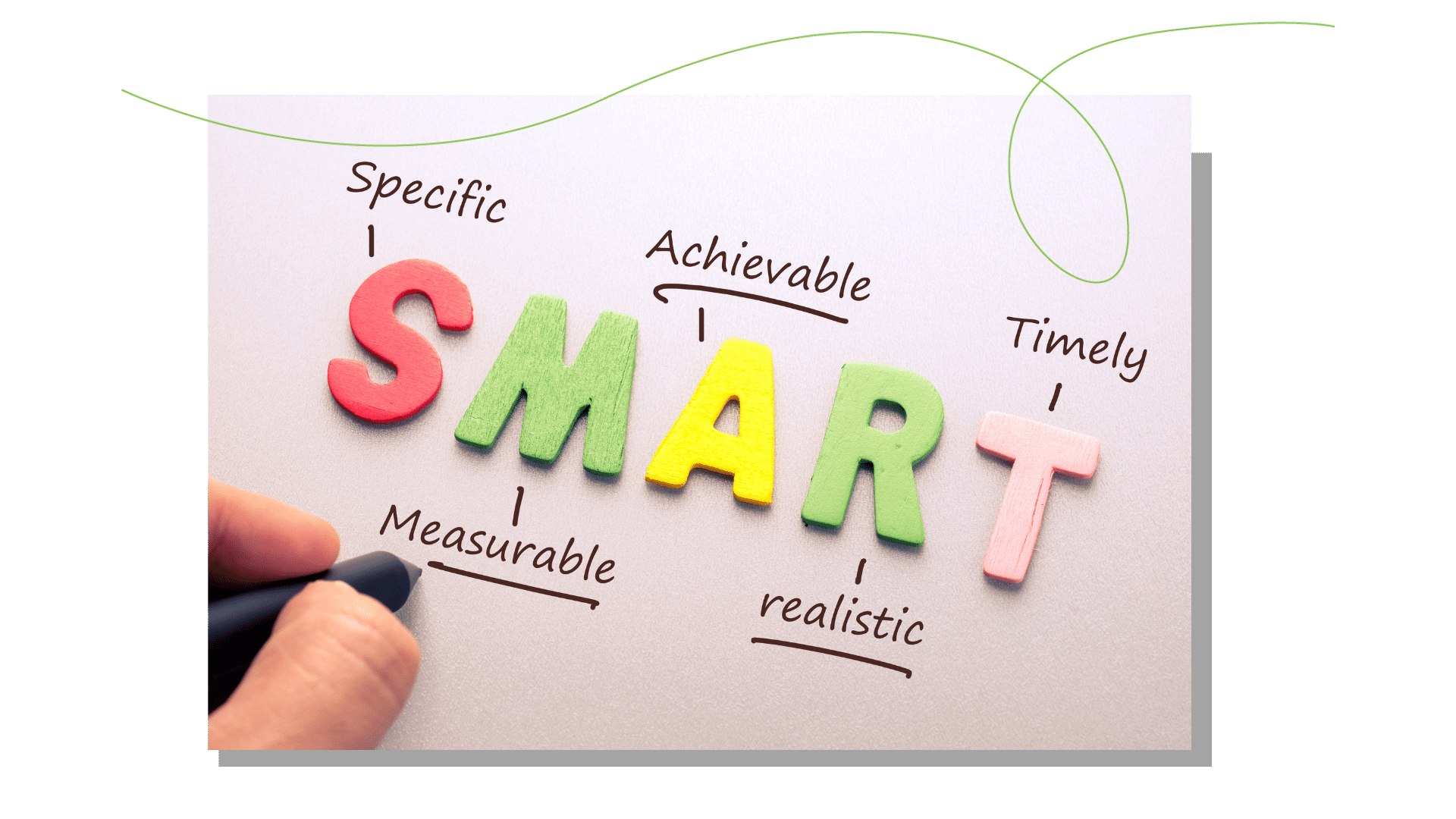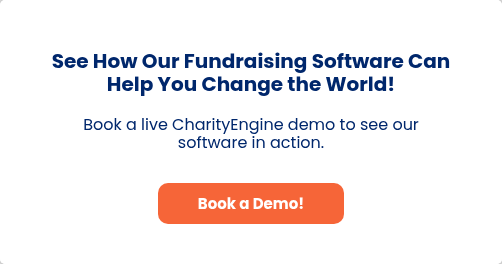Don’t you love it when your nonprofit’s supporters are passionate about your mission? They’re donating, attending events, and reading your newsletters—but they can actually do more than you might think! Beyond giving money, supporters can fuel change through nonprofit advocacy. Your organization is fighting for something, and you can rely on your supporters to advocate for change.
In this article, we'll cover everything you need to know about nonprofit advocacy, including:
At CharityEngine, we’ve worked with clients to launch action alert campaigns since 2008. Over the years, the solutions and tools we offer have evolved in response to best practices and innovations within the nonprofit technology space. While we can’t promise a seismic shift in the policy you’re focused on, we can offer your supporters easy ways to let their voice(s) be heard and to help amplify those voices through technology.
What is Nonprofit Advocacy?
Nonprofit advocacy involves using the voice and power of your nonprofit’s organized efforts to effect change that furthers your mission. Advocacy is a grassroots, person-to-person collection of support that targets decision-makers and uses tools to lobby on behalf of your platform.
Have you ever circulated a survey or a petition? Then you’ve used advocacy tools to your benefit. It’s all about gathering like-minded people—donors and supporters!—and using your collective voice to send an effective and strategic message to a group.
Advocacy works. Public policy is a powerful framework that can change the world, in ways large and small, for the greater good. There are many examples of groups that, while you may disagree with their mission, have effectively promoted change in their favor. This is proof of the power of a collective voice.
6 Questions to Ask Before Getting Started
Who in your organization will spearhead this nonprofit advocacy campaign?
Before any plans are made, figure out who is in charge. This person will spend a significant amount of time organizing advocacy efforts, equipping supporters, monitoring campaign progress, and measuring and reporting results. This person will initiate partnerships with corporations or local advocacy groups.
The role is not usually held by the executive director. You don’t want to assign the job to someone who would be pulled in other directions easily.
Once you’ve identified the leader, let’s move to the second half of the who. Who are the supporters who will support the effort? Their passion will make the campaign successful as long as they have direction and leadership. There are a few ways to rally your troops:
- Plan an onboarding event, virtual or in person, where you can share your passion for the assignment. Explain what you will ask volunteers to do and tell them the support they can expect. They will need a toolkit and guidelines, but who do they contact if they have questions during the campaign?
- Talk about the messages and the cadence at which they will be sent. Give supporters the whole picture, and then break it into bite-sized chunks.
- Invite ideas, then implement them. You will get amazing ideas from the people who care about the same issue but come at it from a different point of view. Ask, then incorporate the ideas that make sense.
What measurable goal do you want to accomplish?
This isn’t your mission—end hunger—it’s more like a subset of your overall annual fundraising goal. So if, for example, your food pantry goal is to raise $2 million in this fiscal year, your advocacy goal might be to get $50,000 in grants from multiple sources during this 10-week campaign.
Your goal, as we often say, must be SMART.
- Specific
- Measurable
- Achievable
- Realistic
- Timely
The more specific your goal can be, the better. This goal will keep your campaign focused, attract new supporters, and increase the likelihood of success.
When is the best time for your advocacy?
Advocacy has seasons! Legislative and congressional terms are not all the same and can even be a bit convoluted: the Legislature of the State of Texas, operating under the biennial system, convenes its regular sessions at noon on the second Tuesday in January of odd-numbered years. The maximum duration of a regular session is 140 days.
The FDA hears public testimony at certain meetings, and Congress has about two sessions yearly. Even your local governing entities vote on a regular schedule.
When we drill down and talk to smaller nonprofits, we urge them to ask when there will be a vote, or a town hall, or a chance when their voice can be heard.
Once you know when the big event takes place—the vote, the hearing—back up a few months. Determine how long your campaign will be.
As nonprofits consider the length and complexity of their campaign, we offer this advice: be sure that, relative to other efforts, an advocacy campaign is not a major part of your annual activities.
Why? The IRS does not allow 501(c)(3) organizations to spend a substantial part of their activities attempting to influence legislation.
Grassroots advocacy, in which many of our clients engage, is effective. This regulation gives you a great list of how to start your efforts: meetings, fliers, and educational outreach.
Where will your advocacy efforts be focused?
Redistricting can change legislators, so it’s important that you know which office you should target. Not only do you need to identify the office, but also the address, the phone number, the email, and the people in the office.
In what city, or cities, do you expect to launch?
Where will your supporters come to get materials or training? Your website can have an advocacy page where supporters can find a toolkit and the information they need.
Why does this advocacy make sense for your nonprofit?
If you are a food bank in a busy metropolitan city, your goal is likely to end hunger in your community. What if the Good Samaritan Food Donation Act of 1996 were in danger of being repealed? (Editor’s note: it’s not. This is a “for example” only.) The act protects those who donate and distribute food. Your advocating for that piece of legislation makes great sense. (Or would, if it were real.)
It doesn’t make as much sense for you to lobby to keep a T-ball field open.
This question can help keep you true to your mission.
It’s also wise to look at the big, gigantic, overwhelming goal—cure a disease—and make sure that your advocacy win will support that overall goal. Many, many voices working in concert can be quite powerful, so making sure you’re all moving in the same direction will amplify those voices.
How are you going to launch the advocacy campaign?
Your options, while not endless, are numerous. Phone, email, online campaign? Knocking on doors and getting signatures? Attending a rally? Handing out fliers?
It’s a good idea to check advocacy resources to see what’s trending when you are planning your campaign. As with anything, there is constant change in the field of advocacy, and you can get some great and timely ideas by looking at what’s happening with other successful campaigns.
Don’t sleep on digital advocacy. The good old-fashioned ringing doorbells for signatures works, but recent events have really highlighted how powerful digital media can be. So use it to your advantage, alone or in conjunction with a boots-on-the-ground advocacy campaign.
How can you use digital advocacy to spread the word about your campaign?
- Your website
- Social media
- Any mobile apps you have
- A text-to-support campaign
- Email
In general, use any outreach method you can to get visible support for your cause. This can be signatures, likes, shares, donations, or even supporters wearing your t-shirt at a rally.
And finally, lean on technology. CharityEngine offers software built to help nonprofits with advocacy campaigns, so don’t do twice the work in twice the amount of time; technology can help you.
What can you expect from advocacy technology? Here are a few things our module does:
- Divides your supporters into groups by location.
- Lets them choose the channels they want to use.
- Prepopulates forms for easy submission.
- Accommodates new redistricting, so your data is up to date.
- Provides accurate information for constituents living near district borders.
- Offers updated information on who holds what offices.
- Gives you templates for phone scripts, emails, petitions, letters, and social media pages that can be widely disseminated.
Everything you need to segment and equip your donors, then measure the effectiveness of your campaign, is available in our advocacy software.
How to Motivate Donors to Participate in Nonprofit Advocacy
Motivating anyone to do anything can be challenging, as almost any parent of teenagers (or toddlers!) knows. Once you delve into what the experts advise, though, you’ll have a toolkit you can use to motivate just about anyone, kids included.
Any nonprofit will want to motivate supporters to donate, attend events, participate in campaigns, or act as advocates on its behalf. Here are five science-backed methods proven to motivate people:
- Explain the outcome. When you link the action (circulating an online petition) with the result (support of a worthy bill), you’re creating a solid connection between what you want them to do and what that action will achieve.
- Don’t focus on the problem. Often, nonprofits will appeal to supporters’ goodwill because the problem at hand is so ominous. While this can figure into your pitch, you’ll get better results if you emphasize the progress, solutions, and positive vision you will collectively enjoy if this person supports your efforts.
- Appeal to empathy. Humans are wired to react more strongly when there is an emotional connection, so make that connection and then appeal to it. Use powerful testimonials, compelling case studies, or heartfelt impact stories. Include videos, images, and written content. You’ll drive empathy, understanding, and action.
- Use social proof. Show others who are working on behalf of your cause. If people see that there’s a big picture, they will often be more motivated to join a movement. Social proof (sometimes known as peer pressure!) can be a powerful motivator.
- Make it easy. Remove any barriers that could prevent your donors and supporters from taking action. Whether it’s clear instructions, online resources, multiple commitment levels, or sponsors that can answer questions, ensure your supporters can act without impediments.
Incorporate these science-backed methods to motivate your constituents.
Why Nonprofit Advocacy Matters to Your Donors
All nonprofits strive to find more ways to engage their supporters and offer opportunities for advocates to show their support. It’s age-old nonprofit stress: you need more supporters, and you need more opportunities for your current supporters to get involved.
Some of the most successful fundraising programs involve lifelong, ongoing support from donors. Many of these sustainers began by investing in the philosophical mission of an organization, rather than making a donation. These casual and sideline supporters are the ones who come to an event as a “plus one” or volunteer to help at a community drive or event. Recognize that support for what it is—donations of time and effort—and nurture them accordingly. Use your year-end giving campaign to highlight the good you do, thereby increasing the need for your work.
Advocacy offers another easy way for supporters to get involved without involving their wallets. You can:
- Use small advocacy efforts as a way to get casual supporters involved
- Ask for advocacy outreach rather than money from regular supporters
No matter how you position it, and to whom, advocacy is a critical and cost-free way for your supporters to jump in and have a tangible effect on your nonprofit and its mission.
Remember that if you’re not measuring your success, it’s hard to find ways to improve upon it. And as we’ve discussed, it’s not always about dollars; advocates showing their support through time and talent can be measured as easily as dollars can be, and this engagement can help you gauge the health of your donor base. Using software with an advocacy module is the best idea, but any good CRM will let you track engagement and results.
There are ways you can tap into both science and technology to motivate your supporters. Next up, we will review five science-backed tips to motivate people, discuss how these tips can be used in advocacy, and weave in ways that robust technology can help your nonprofit get constituents excited to get vocal about your mission.
Examples of Nonprofit Advocacy
What does advocacy look like? Here are a few examples.
- Circulating a petition against a development that means loss of green space
- Organizing a panel of medical experts to lobby for FDA approval of a treatment drug
- Pressuring the board of education to address mental health in middle schools
For example, my mother repeatedly called and wrote letters to our local officials to complain about people speeding through our neighborhood. Her repeated efforts helped to force the issue so that eventually speed bumps were installed...that’s advocacy.
Most advocacy tools offer a feature called zip-to-district matching. Your supporters enter their zip code and are instantly linked to the correct elected officials to contact. Using a robust advocacy tool will also be accurate, as most systems follow the rules regulated and enforced by the Sargent at Arms at the Capitol and in every state legislature.
One of our clients is an impressive healthcare research nonprofit that amalgamates member organizations from the medical, health, and scientific fields. The client uses tools in our software to automate notifications to supporters, to launch action alerts to send emails, direct posts on social media, make phone calls, and use petitions and surveys. Take a look at your system and make sure these advocacy tools are available for your next campaign.

Many nonprofit associations also have separate foundations that differentiate between their fundraising and lobbying efforts. Using an all-in-one CRM allows you to leverage technology to support fundraising as well as separate engagement campaigns, including grassroots advocacy action alert campaigns.
Best Tools To Use For Your Nonprofit Advocacy Campaign
Advocacy Software
How does a nonprofit get its supporters in front of the right people, in an organized effort, to catch the attention of those who can make decisions?
It’s no surprise that technology purpose-built for advocacy is the most efficient, effective answer. For example, it's not easy to just email or call a legislator. Constituents need to go to the appropriate website and prove they are in the district and eligible to contact the legislator.
CharityEngine's advocacy software enhances nonprofits' efforts by automating tasks, helping teams analyze their progress, and supporting engagement initiatives.
Here are some ways you can leverage your advocacy software to motivate constituents and energize supporters to take action on behalf of your mission.
-
Leverage surveys. You can automate surveys and customize them to collect information relevant to your cause. For example, you could build out constituent records that include interests, world or political views, or public stances on issues.
-
Appeal to their passions. A truly integrated platform will give you a 360-degree view of a contact’s engagement. For example, if you have a supporter who consistently engages in a certain type of advocacy action (CharityEngine can help you track that!), you can automate personalized appeals to donate. Data mining across constituent interactions—whether it’s donating, joining a phone bank, making calls, attending an event, or participating in a peer-to-peer campaign—will help you identify and engage those supporters who might be willing to become more vocal advocates on your behalf.
-
Match constituents and officials. With zip-to-district matching, technology can help you direct groups of supporters to lobby the right public officials. Your campaigns can be cross-country, with each group knowing precisely who they need to contact. You equip them with your messaging and outreach ideas, and you have an advocacy campaign that scales up quickly.
-
Leverage multiple channels. Motivating constituents across channels increases the likelihood they will recognize the effort and respond. Use every channel available in your CRM: email, mail, SMS, phone calls, and social media. With compelling images and results-focused appeals, you’ll easily influence a larger audience once you expand your communication channels.
-
Grassroots mobilization. From developing an online presence through a website and social media to launching email campaigns, managing volunteers, segmenting your constituents, and using targeted SMS campaigns, you can start building advocacy efforts in their local communities.
- Follow up and nurture. Once a constituent has taken advocacy action on your behalf, it’s critical that you not only automate a thank-you email but also keep that individual engaged. If, for example, they were advocating for a policy change, any news around that policy or other tangential policies would be of interest to them.
Providing micro-actions to engage easily can help grow the participation you see with your supporters over time. When each action results in a positive experience (whether that be positive reinforcement, recognition, or updates on the outcome), your supporters will be more likely to return.
You’ve got your supporters engaged and you’re ready to launch them. How can you help amplify their message and let their voices best be heard? Give them some options to get involved in a variety of ways so it’s easier for them to participate.
And, if you’re just starting with advocacy, pick one outreach method (like signing a petition) and give it a try.
Regardless of how your advocates reach out, you’ll want to recognize their efforts and thank them, as well as keep them apprised of any results or consequences of their actions.
.png)








%20(1024%20%C3%97%20500%20px)%20(8).png)
-2.png)